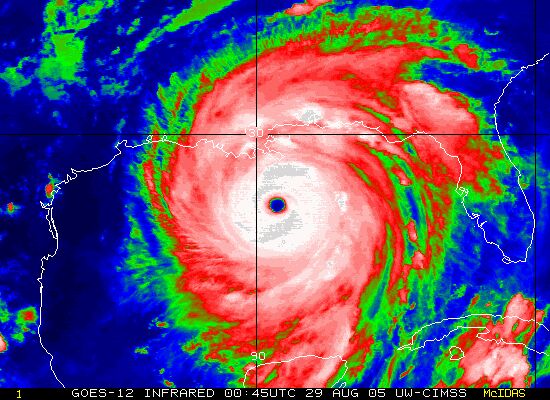One of my favorite tools that's really come to prominence in the last decade or two is
ensemble clustering. Basically, if we take all the members from the various ensembles, can we identify groups of similar outputs? For example, when dealing with a trough, is there a way we can naturally (mathematically) group ensemble members in a manner that distinguishes different possible scenarios?
Turns out, yes, and it can help demonstrate how differences in one meteorological parameter (usually something like the 500mb heights) influences another (like temperatures, snowfall, etc.). This graphic's a little older, run off of the 00z suites, but makes it very clear how different setups produce different results!
Examining ClustersThis was the cluster analysis for 00z today valid Tuesday, with the clustering based on how the ensemble members depicted 500mb heights. Each little insert image shows how each cluster differs from the average of all the ensembles put together. For example, in
Cluster 1, we see that it has higher heights over the Four Corner region. This suggests the Cluster 1 scenario involves weaker troughing. Compare that with
Cluster 2, which shows lower heights in that region, suggesting that's a depiction of a scenario involving a more amplified trough. Cluster 3 is sort of similar to Cluster 1, with even less amplification, and Cluster 4 is sort of similar to Cluster 2, with perhaps a slower trough.
So, as we've been able to glean from the guidance so far, there are two major camps: more shortwave amplification versus less shortwave amplification. We could probably have figured out after looking at enough models, but it's nice seeing all the ensembles together in one spot so we can readily spot the different scenarios. There's also some additional information, too. Those numbers and percentages at the top tell you how many members of each model suite (C for Canadian, G for GEFS, E for ENS, T for everyone put together) fall into each camp. That can tell you whether there's truly a dominant consensus scenario in the guidance, or if a particular ensemble suite happens to be out to lunch.In this case, notice how the GEFS (G) was quite a bit more pushy about a weaker trough (cluster 3) than the other suites, or how the GEPS was more insistent about a slower, highly amplified trough (cluster 4).
 The Consequences of Clusters
The Consequences of ClustersNow that we have our groups and clusters of ensemble members, we can ask:
how does each scenario affect temperature and precipitation? I posted how earlier about stronger shortwave amplification enables a reinforcing surge of cold air. From the deterministic guidance, we can sort of see that by flipping between models, but with ensemble cluster analysis, that becomes a whole lot easier.
Notice how scenarios 1 and 3 lead to warmer temperatures over the central US on Tuesday compared to the total ensemble average, and check how scenarios 2 and 4 lead to colder temperatures. That lines up with our intuition about stronger amplification (scenarios 2 and 4) lead to colder temperatures!

And how about stronger troughing leading to better moisture delivery (and weaker troughing suppressing humidities)? Well...

We'll revisit this when the 12z ensemble guidance has been fully loaded and ready to go.
 The posts in this forum are NOT official forecast and should not be used as such. They are just the opinion of the poster and may or may not be backed by sound meteorological data. They are NOT endorsed by any professional institution or
The posts in this forum are NOT official forecast and should not be used as such. They are just the opinion of the poster and may or may not be backed by sound meteorological data. They are NOT endorsed by any professional institution or 


















